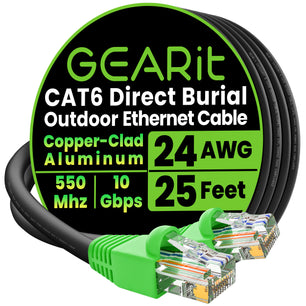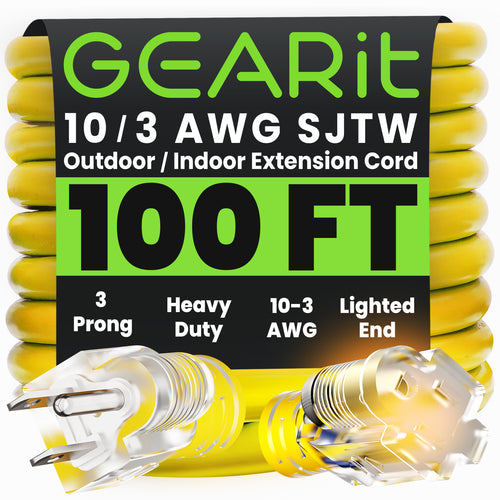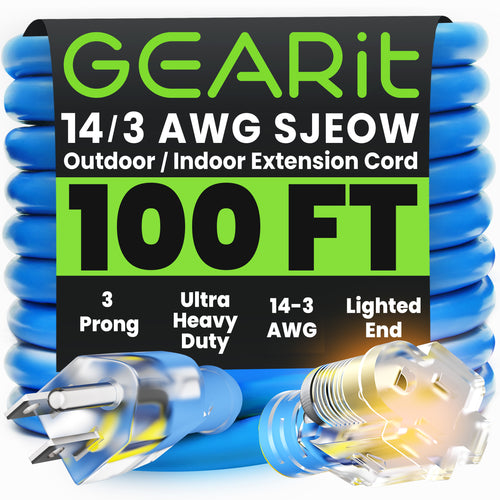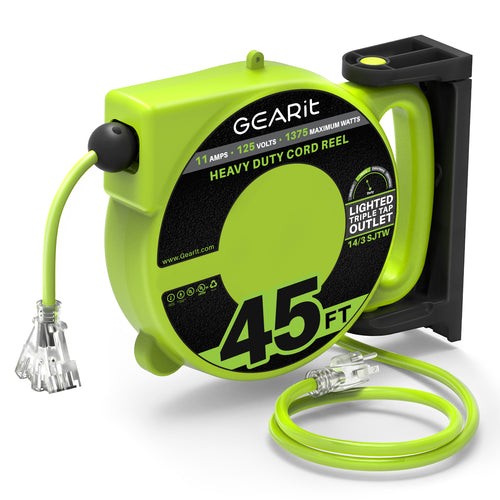
Extension cords are essential tools for powering devices and tools in various settings, from construction sites to home workshops. However, not all extension cords are created equal. Understanding amp ratings and wire gauge is crucial for selecting the right extension cord to ensure safety and optimal performance.
In this article, we’ll delve into the world of extension cords, explaining what amp ratings mean, how wire gauge affects performance, and practical tips for choosing the right cord for your needs.
What Are Amp Ratings?
An amp rating (amperage) indicates the maximum amount of electrical current an extension cord can safely carry. It’s essential to match the cord’s amp rating with the power requirements of your devices. Using an extension cord with a lower amp rating than needed can lead to overheating, damage, or even fire hazards.
Wire Gauge and Amp Ratings
Wire gauge refers to the thickness of the wires within the extension cord. The larger the wire diameter (lower gauge number), the higher the amp rating. Conversely, shorter wires tend to have a higher amp rating, while longer wires have a lower amp rating.
Here’s a breakdown of recommended wire gauges based on the length of the extension cord:
- 1. 100-foot Extension Cords: These long cords act as significant resistors due to their length. As a result, you typically don’t find 100-foot cords exceeding 15 amps (15A) capacity.
- Recommended wire gauges:
- ► 20A: 10-gauge (4.00% voltage drop)
- ► 15A: 12-gauge (5.00% voltage drop)
- ► 12A: 12-gauge (4.00% voltage drop)
- ► 10A: 12-gauge (3.33% voltage drop)
- Note: Consider using the next size up if you’re close to the 5% voltage drop limit or opt for a shorter cord whenever possible.
-
2. 50-foot Extension Cords: These cords strike a balance between length and capacity.

- Recommended wire gauges:
- ► 20A: 12-gauge (3.33% voltage drop)
- ► 15A: 14-gauge (3.88% voltage drop)
- ► 12A: 14-gauge (3.10% voltage drop)
- ► 10A: 14-gauge (2.58% voltage drop)
-
3. 25-foot Extension Cords: Shorter cords offer better performance.
- Recommended wire gauges:
- ► 20A: 14-gauge (2.58% voltage drop)
- ► 15A: 14-gauge (1.94% voltage drop)
- ► 12A: 14-gauge (1.55% voltage drop)
- ► 10A: 14-gauge (1.29% voltage drop)
Practical Tips for Choosing the Right Extension Cord
- 1. Know Your Device’s Amp Requirements:
- ► Check the amp rating of your devices (tools, appliances, etc.) and choose an extension cord that can handle the combined amp requirements.
- ► For small appliances (up to 13 amps), a 16-gauge cord suffices. Larger tools (10 amps or more) require at least a 12-gauge cord1.
- 2. Consider Wattage and Voltage:
- ► Convert wattage to amps by dividing the wattage by the voltage (usually 120V in the U.S.). Then match it to the correct wire gauge2.
- 3. Inspect Cord Quality:
- ► Look for durable cords with proper insulation and sturdy plugs.
- ► Avoid using damaged or frayed cords.
- 4. Avoid Daisy-Chaining:
- ► Connecting multiple extension cords (daisy-chaining) can lead to voltage drops and safety risks. Use a single, appropriately sized cord whenever possible.
Safe & Reliable Power
Understanding amp ratings and wire gauge is essential for safe and efficient extension cord usage. By following these guidelines, you’ll select the right cord for your needs, ensuring both safety and reliable power delivery.
Remember, when in doubt, choose a thicker gauge cord to err on the side of safety. Your tools and appliances will thank you!
Browse our extensive collection of extension cords, meticulously crafted to exceed industry standards in durability, reliability, and safety. From varying lengths to gauges, GearIT offers a comprehensive range of options to cater to diverse applications, ensuring seamless power delivery and peace of mind.





























































